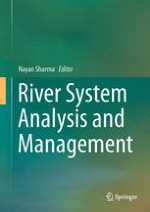2017 | OriginalPaper | Buchkapitel
9. Emerging Methodologies for Turbulence Characterization in River Dynamics Study
verfasst von : Harinarayan Tiwari, Amir Khan, Nayan Sharma
Erschienen in: River System Analysis and Management
Verlag: Springer Singapore
Aktivieren Sie unsere intelligente Suche, um passende Fachinhalte oder Patente zu finden.
Wählen Sie Textabschnitte aus um mit Künstlicher Intelligenz passenden Patente zu finden. powered by
Markieren Sie Textabschnitte, um KI-gestützt weitere passende Inhalte zu finden. powered by
